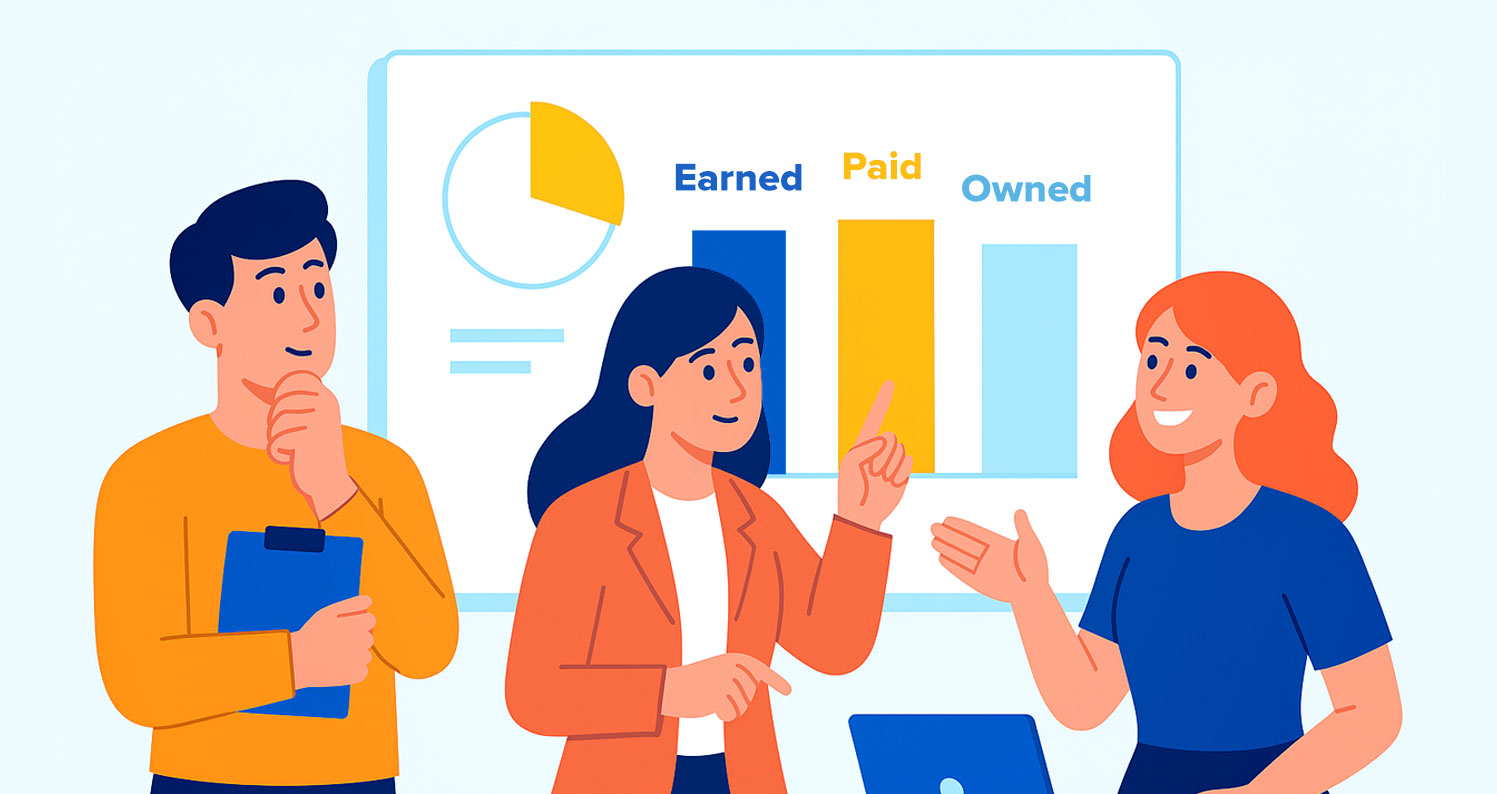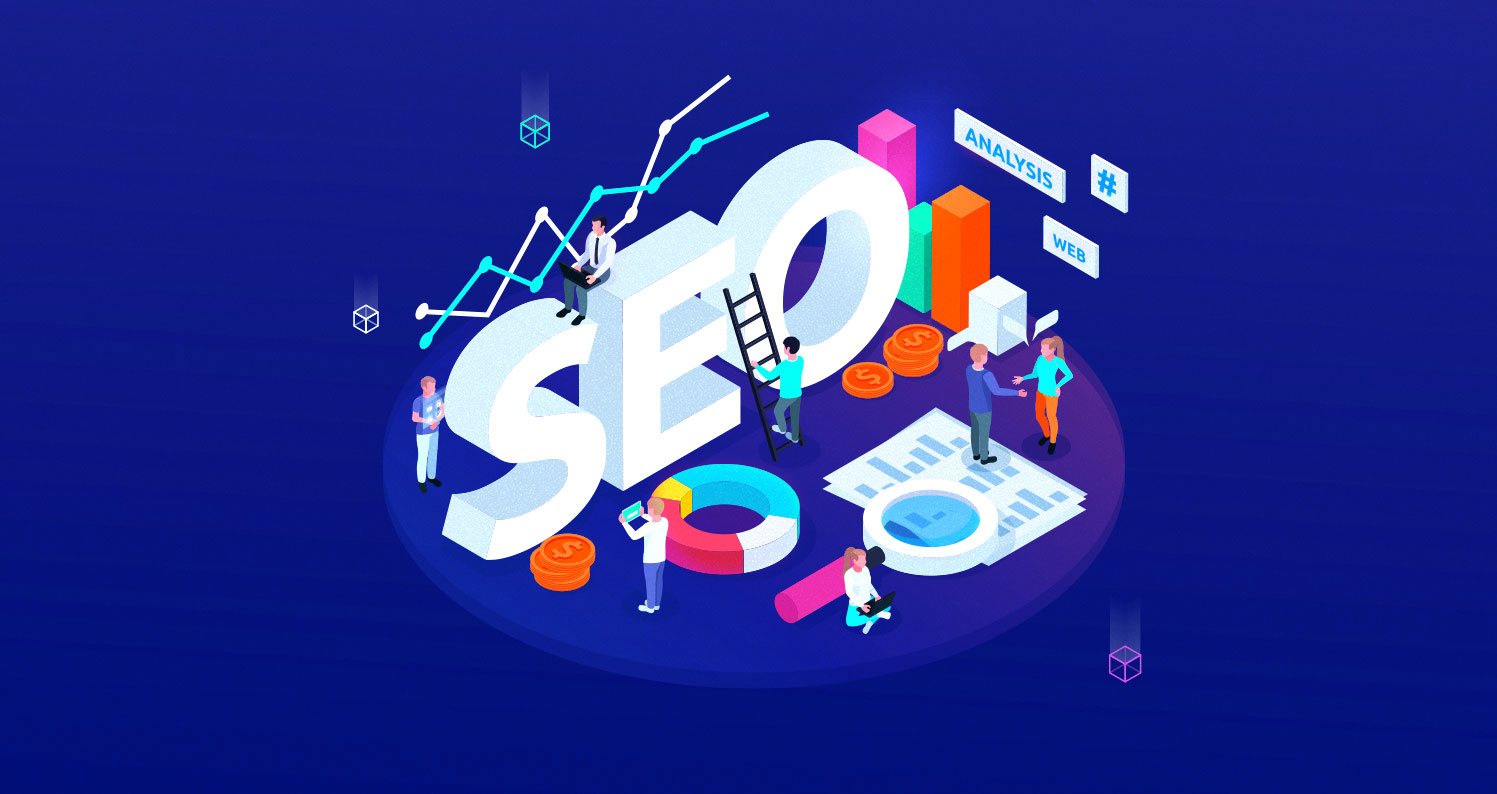Digital Media: Earned vs Owned vs Paid
What are the different types of digital media, and which deserves the biggest portion of your marketing budget?

Digital marketing strategies come with a lot of lingo, making it tough to choose the right approach to drive revenue.
Three key types of digital media lead the direction of your online strategies:
At Gen3 Marketing, we provide services to cover all three. Learn the differences to find the right media mix for your brand.
What is earned media?
Earned media refers to publicity gained through promotional efforts without sponsorships. It’s the result of organic exposure through reputation and word-of-mouth recommendations.
A common example of earned media is a mention or feature in a reputable news outlet or industry publication.
Earned Media Examples
- A tech startup develops an innovative gadget. A prominent technology blog writes a product review highlighting its unique features and benefits.
- A parenting TikTok influencer finds a product they find useful for their daily routine. They share the product with their followers without coordination with the brand.
- A local newspaper covers the grand opening of a new business. It publishes an article about the business, possibly interviewing the business owner for a quote.
- An agency submits a case study to an association and wins an award. This leads to the brand’s promotion in newsletters, press releases, and industry websites.
This type of media can come from social media channel shares, user-generated content, or positive reviews from customers on platforms like Yelp and Google Reviews.
Earned media is valuable because it often carries more credibility with consumers. People tend to trust third-party endorsements more than advertisements. In short, earned media efforts can help build trust with potential customers, which is a good thing.
What is owned media?
Owned media includes any content and channels that a brand fully controls.
This includes any digital property owned by a brand, such as its website, blog, social media profiles, email newsletters, and any other content the company produces.
Owned Media Examples
- A company’s blog post shares tips about how and why to use its products. It links to those products for readers to easily buy.
- An email newsletter is created each quarter to round up the opinions of industry experts. It shares the information with subscribers.
- A series of YouTube videos are created to show how a product is assembled or how it works.
- A branded graphic is created and shared on social media platforms to celebrate a holiday or event with the brand’s followers.
In these strategies, the brand creates, controls, and distributes content. This allows for a direct connection with an audience. Content marketing campaigns are carefully crafted to match the brand’s image and messaging.
What is paid media?
Paid media refers to any form of advertising or promotion that a brand pays for to reach a wider audience.
Unlike owned and earned, paid media strategy relies on financial investment to secure visibility across digital or traditional platforms.
Examples of paid media include Google Ads, social media ads on platforms like Facebook and Instagram, sponsored content, and display ads on third-party websites.
Paid Media Examples
- A business rents a billboard beside a highway to promote a holiday sale or special event at their location.
- A company begins a paid search strategy to bid on keywords related to a new product. These ads appear in sponsored search results.
- A business invests in display advertising. This gets their brand to appear on third-party sites with high-quality content related to the brand.
- A brand invests in affiliate marketing. The brand will now appear in articles by publishers and content creators that promote their product or service.
Paid media is a powerful tool for driving traffic quickly and increasing brand awareness. However, it requires an ongoing budget and careful targeting to achieve the best return on investment (ROI).

Determining how to budget against different types of digital media can be challenging for brands of all sizes.
Should brands invest in earned, owned, or paid media?
Choosing where to invest your marketing budget can be challenging. Ultimately, the way you ration your spending will depend on factors including your goals and desired outcomes.
The key difference between owned and earned media lies in the control and nature of the exposure.
1. Control
- Owned is fully controlled by the brand. This control allows companies to dictate the messaging, design, and distribution of the content. Brands can create content that aligns perfectly with their marketing goals and brand identity.
- Earned is not directly controlled by the brand. It relies on how external entities perceive and engage with the brand. This makes it unpredictable and subject to public opinion.
- Paid gives brands partial control over where and how content is displayed. Yet, the messaging still depends on how well the platform’s algorithms deliver the ads to the intended audience. Budgets and platform guidelines govern paid campaigns. Therefore, while you pay for visibility, full control over outcomes may be limited.
2. Credibility
- Owned is seen as self-promotional. It comes directly from the brand. While it can establish authority and provide valuable information to consumers, it may not carry the same level of trust as earned media.
- Earned often has a higher credibility factor. This is because it involves endorsements from third parties, such as journalists, influencers, or satisfied customers. Organic recognition can significantly enhance a brand’s reputation. This can yield powerful results.
- Paid can be viewed with some skepticism. Consumers understand that the brand is paying for exposure. However, when executed well, paid media can still build credibility if it offers value, is highly targeted, or appears in reputable publications.
3. Cost
- Owned typically incurs costs related to content creation, website maintenance, and distribution. However, once established, it can serve as a cost-effective way to reach an audience over time.
- Earned can be viewed as “free” exposure. On the contrary, the reality is that generating earned media often requires investment in relationships, public relations efforts, and sometimes product giveaways or events.
- Paid involves ongoing costs. Brands pay for placement on various platforms. The cost depends on factors like ad format, reach, and duration, but it offers faster visibility compared to organic methods.
4. Measurement
- Owned can be measured through analytics. This includes tracking website traffic, engagement rates, and conversion metrics, providing direct insights into performance.
- Measuring earned media can be more challenging due to its organic nature. Brands often use media monitoring tools to gauge reach, sentiment, and the overall impact of earned media on their reputation and visibility. Earned media is not always directly tied to revenue generation and can correlate to revenue as visibility improves.
- Paid is generally easier to measure. Associated platforms provide detailed metrics such as impressions, clicks, conversion rates, and ROI. This makes paid media more predictable in terms of understanding the impact of specific campaigns and adjusting spending to maximize outcomes.

SEO is primarily categorized as owned media.
Where does SEO fall in the mix of earned, owned, and paid media?
Search Engine Optimization (SEO) straddles the line between earned and owned media. That said, SEO is primarily categorized as owned media.
When a brand optimizes its website for search engines, it uses owned media to improve visibility and attract organic traffic. The goal of SEO is to make owned media more discoverable in search results, leading to increased engagement and conversions.
Elements of SEO can also involve earned media. SEO is a long-term initiative that can help proliferate organic traffic as the website is optimized for users and search engines.
For example, consider backlinks from other websites. These links can point to a brand’s content and enhance keyword positions. Organic backlinks are considered earned media, because they reflect the trust and authority bestowed upon the brand by external sites.
Conversely, SEO is not typically associated with paid marketing efforts. However, the best SEOs coordinate with paid search teams and strategies to help capture organic traffic related to ongoing campaigns.
Get a digital marketing solution tailored to your needs. Contact our experts to find the ideal strategy for your brand’s growth. We’ll identify which paid, owned, or earned initiatives can best achieve your goals.
More Blogs
Ecommerce Search Optimization Checklist
Get your online store SEO, GEO, and AEO ready with this helpful checklist from a digital search expert.The ecommerce landscape is changing fast. Search engines now blend traditional ranking signals with AI-generated answers, localized results, and real-time product...
Psychological Safety: How it Drives Better Marketing Solutions
Fostering an environment where team members feel psychologically and emotionally safe leads to better marketing outcomes.As agency work environments grow more flexible, workplace culture must evolve as well. For agencies, like Gen3 Marketing, who strive to deliver...
How AI & Voice Commerce Are Changing Affiliate Marketing
Artificial Intelligence (AI) and voice commerce are changing the affiliate marketing channel. Learn how you can capitalize on the new opportunities offered by these technologies.Artificial intelligence and voice commerce are transforming how consumers discover and...

 By
By 

